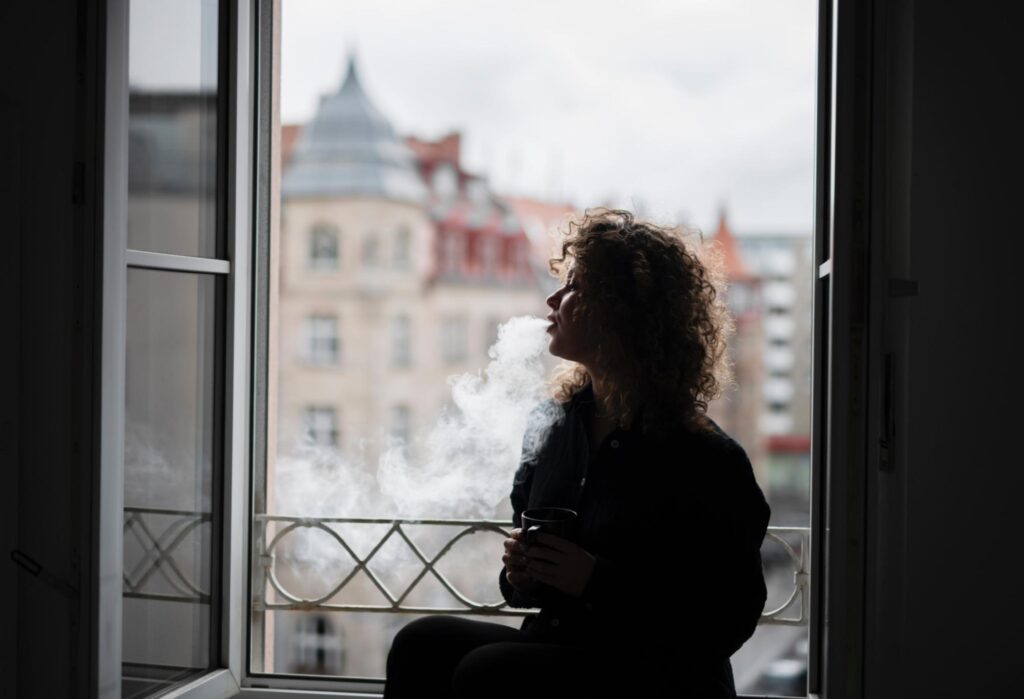The air within our homes should be a sanctuary, free from the harmful effects of smoke that can compromise air quality and pose significant health risks. However, this ideal is often challenged by the realities of daily life.
Many homeowners struggle to maintain a smoke-free environment, grappling with external influences and personal habits. This guide aims to navigate these challenges, offering practical solutions and innovative alternatives to ensure your living space remains a haven of clean air and healthy living.
Contents
Table of Contents
ToggleUnderstanding the Risks of Smoke in Your Home
The presence of smoke in your home harbors significant health risks that can affect every resident. Primary among these concerns is the impact of secondhand smoke, which contains over 7,000 chemicals, many of which are toxic and can cause cancer.
Exposure to such smoke is especially harmful to children and can lead to respiratory infections, asthma, and sudden infant death syndrome (SIDS). Adults aren’t spared either, as it increases the risk of heart disease and lung cancer, even for non-smokers.
Moreover, the impact extends beyond immediate health risks. The particles from smoke can seep into fabrics, carpets, and furniture, lingering long after the initial smog has cleared. This not only perpetuates the odor but also continues to pose health risks as these molecules are released back into the air over time.
Strategies for Maintaining a Smoke-Free Home
Transforming your home into a smoke-free sanctuary can be achieved with these practical and effective strategies:
Establish Outdoor Smoking Areas
Designate specific outdoor areas for smoking to prevent it from entering your home.
Invest in Air Purifiers
Equip your home with air purifiers, particularly those with HEPA filters. These devices are adept at capturing smoke particles and other airborne pollutants.
Regular Ventilation
Ensure your home is well-ventilated by opening windows and using exhaust fans to circulate fresh air. This helps dilute and remove smoke particles.
Smoke-Free Alternatives
Consider the role of vaping as a less invasive alternative to traditional smoking. It’s a step towards a smoke-free environment, especially for those finding it challenging to quit entirely.
Clear Communication
Set clear rules and share them with family members and guests. Communication is key to maintaining a smoke-free home.
Routine Cleaning
Regularly clean fabrics, carpets, and furniture that can harbor smoke particles. This not only eliminates odors but also reduces the risk of pollutants.
The Role of Vaping in a Smoke-Free Environment
Transitioning to vaping is a strategic move for those aiming to maintain a smoke-free home. Here’s how it can be a game-changer:
Significantly Less Smoke
Vaping produces vapor instead of smoke, which means fewer smoke particles and a cleaner indoor environment.
Diverse Flavors
The wide array of flavors available in Vape Juice makes it an appealing alternative for former smokers, helping ease the transition.
Minimal Residual Odor
It leaves behind minimal odor compared to traditional cigarettes, helping to keep your home smelling fresh and smoke-free.
Control Over Nicotine Levels
Many users choose vape juice with varying nicotine strengths, or even none at all, allowing them to control their intake.
Reduced Environmental Impact
It is generally less harmful to the environment than cigarette butts and packaging, aligning with a cleaner, healthier home ethos.

Convenience and Cleanliness
Vaping devices are easy to use and maintain, making them a suitable option for those looking to avoid the mess associated with traditional smoking.
A Step Towards Healthier Living
For many, it is a transitional step towards quitting smoking and supports a healthier lifestyle choice.
Additional Tips for a Healthier Home Environment
Beyond embracing vaping, there are several other strategies to enhance the healthiness of your home:
Regular Deep Cleaning
Regularly clean carpets, curtains, and upholstery to remove dust and potential allergens.
Effective Ventilation
Use exhaust fans in kitchens and bathrooms and open windows when weather permits to circulate fresh air and reduce indoor pollutants.
Use of Indoor Plants
Incorporate indoor plants that are known for their air-purifying qualities. Spider plants, peace lilies, and snake plants can naturally clean the air.
Humidity Control
Maintain an optimal humidity level in your home to prevent mold growth and reduce dust mites.

A dehumidifier can be particularly useful in damp areas.
Smoke Detectors and Carbon Monoxide Alarms
Install and regularly check smoke detectors and carbon monoxide alarms to ensure a safe living environment.
Avoid Synthetic Fragrances
Choose natural alternatives to synthetic air fresheners, which can contain harmful chemicals. Opt for natural essential oil or beeswax candles instead.
Conclusion
The journey to a smoke-free home is both rewarding and essential for a healthier living environment. By understanding the risks associated with smoke, employing strategies to maintain a clean air space, and considering alternatives like vaping, you can significantly improve the quality and overall well-being of your home.
Embrace these changes, and encourage your loved ones to join you in this endeavor. Let’s all take proactive steps towards a smoke-free home, paving the way for a healthier, happier lifestyle for ourselves and those around us.

